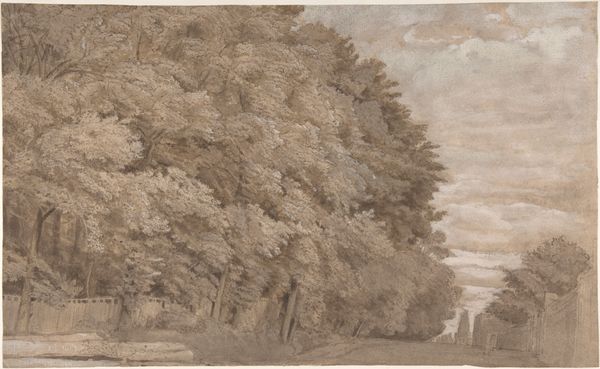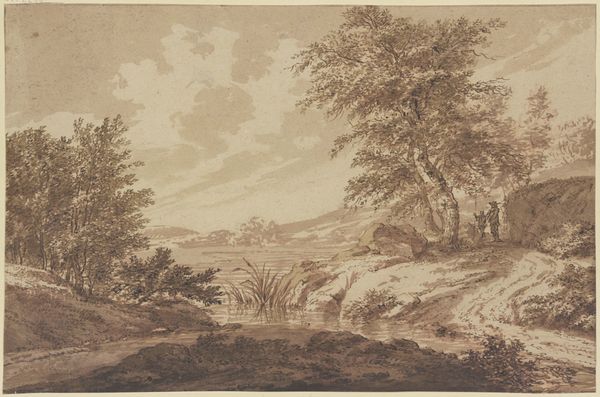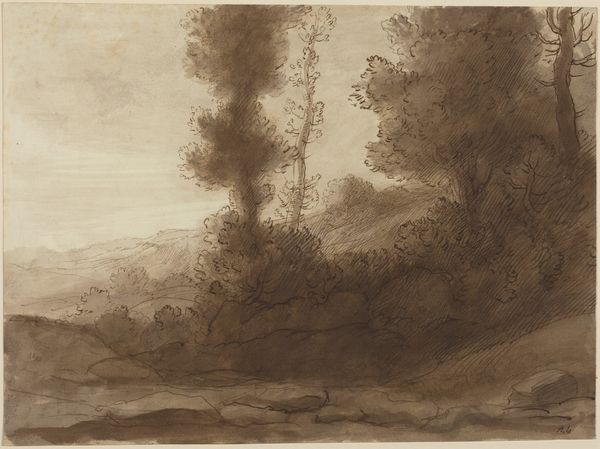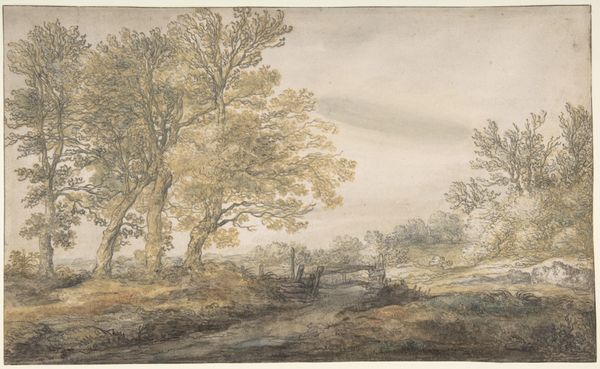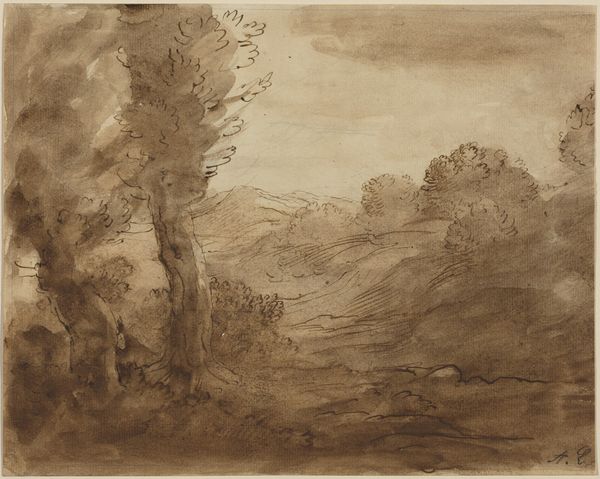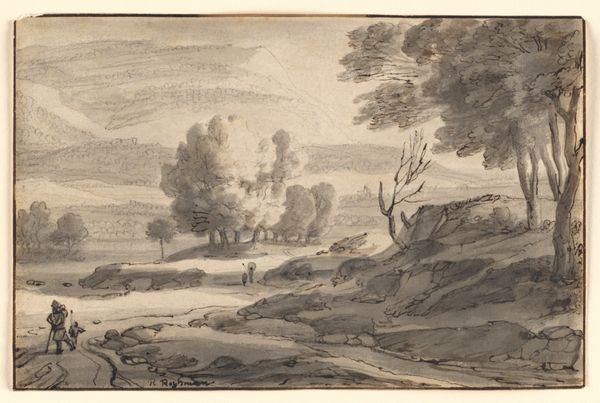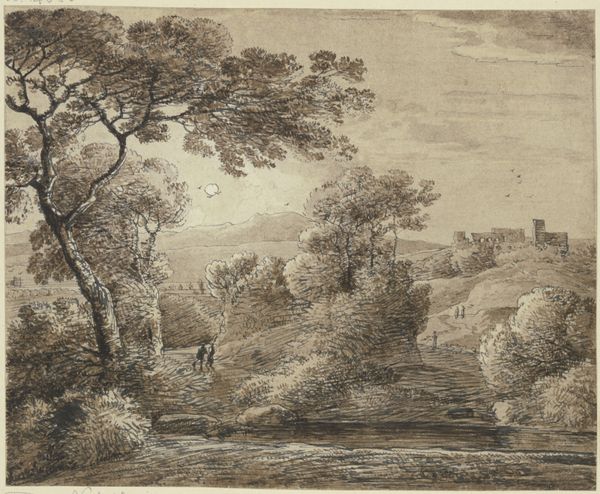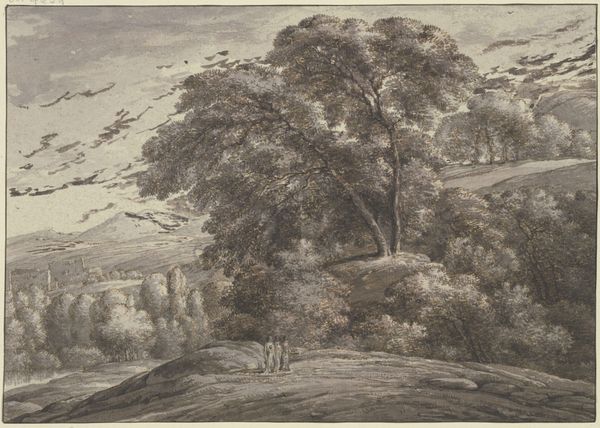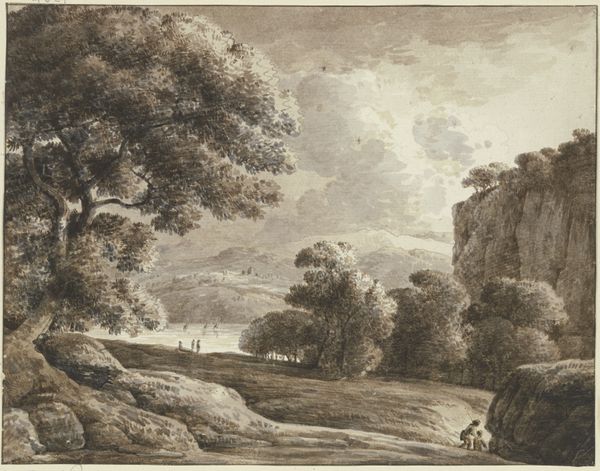
Italian Coastal Landscape with a Thunderstorm 1828 - 1831
0:00
0:00
drawing, tempera, fresco, pencil, charcoal
#
drawing
#
tempera
#
landscape
#
charcoal drawing
#
fresco
#
romanticism
#
pencil
#
charcoal
Dimensions: overall: 23.2 x 32.5 cm (9 1/8 x 12 13/16 in.)
Copyright: National Gallery of Art: CC0 1.0
Friedrich Preller the Elder made this Italian coastal landscape with sepia ink and wash. The scene encapsulates the Romantic movement’s preoccupation with the awesome power of nature. But how might this image also reflect the social and political context in which it was produced? Made in the first half of the 19th century, Preller’s landscape participates in a long Northern European tradition of idealizing the Italian countryside. Educated Germans undertook grand tours of Italy, drawn by its classical ruins and picturesque scenery. Back home, institutions like the art academy in Weimar shaped the aesthetic conventions and tastes of artists like Preller. We might ask: whose vision of Italy is being presented here? This is not a scene of modern life or social change, but rather, an idealized pastoral vision of goats and shepherds. To fully understand Preller’s image, scholars consult travelogues, landscape painting manuals, and the records of academic institutions. The meaning of art is always contingent on its social and institutional context.
Comments
No comments
Be the first to comment and join the conversation on the ultimate creative platform.


